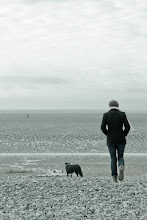Wednesday Project Support with John and Andy
Andy Farringtons workshop
Today we looked at a few professional portrait photographers and a few amateur photographers. An important factor in editorial portraiture is that the image must stand up on it's own without text.
Harry Borden
Borden is an editorial photographer, his portraits are environmental, the surroundings of the subject are just as important as the subject.
http://www.harryborden.com/
Borden's portraits are original but timeless I feel. I really enjoy his work, both his black and white work and his colour images.
Nadav Kander
Kanders portraits do not have a steady style, his images vary in look.
http://www.nadavkander.com/
I like Kanders use of light, however personally I prefer his landscapes aesthetically.
Mark Tucker
Tuckers images are great examples of lifestyle portraits, showing a person living their life. There is very little eye contact between his adult subjects and the lens, there is a lack of connection. He uses lights and his images have a soft look to them. Tucker was one of the first people to use texture and overlay.
http://www.marktucker.com/Artist.asp?ArtistID=16186&Akey=MPEGN7AE
Some of Tuckers images are very reminiscent of Diane Arbus' work.
Jody Ake
Ake uses the wet collodion process, an historic photographic technique which involves using a large format camera and glass plates.
http://www.jodyake.com/portraits.html
Out of these four professionals, my favourite images are those of Harry Borden.
Chris Parker off camera flash workshop
On full power a hot shoe mounted flash gun generates a pulse of light lasting approximately 1/750th of a second and the duration of the flash changes according to power.
Power Duration
1/1 1/750th
1/16th 1/6000th
1/32nd 1/10,000th
So for example, if your camera is set to ISO 100, f/2.8 and the flash is set on full power, then the difference that changing the shutter speed from 1/125th to 1/250th is going to have no effect.
Only by changing the aperture can you change the flash intensity on the image.
The effect of ambient light, such as daylight or constant lighting can be changed with both the aperture and shutter speed on the camera.
It is easier to see this when put into practice, balancing ambient light and flash to create fill in flash. e.g On location take a meter reading of the ambient light, using a light meter or camera. Have aperture set about f/2.8 (or widest on the lens you have). Underexpose the ambient by 2 stops using the shutter speed (be aware of your cameras shutter sync speed). Set the flash to match the aperture and ISO of the camera. Take the photograph, illuminating the subject with the flash. This technique is good for shooting into the sun.
Friday 20 March 2009
Subscribe to:
Post Comments (Atom)

No comments:
Post a Comment